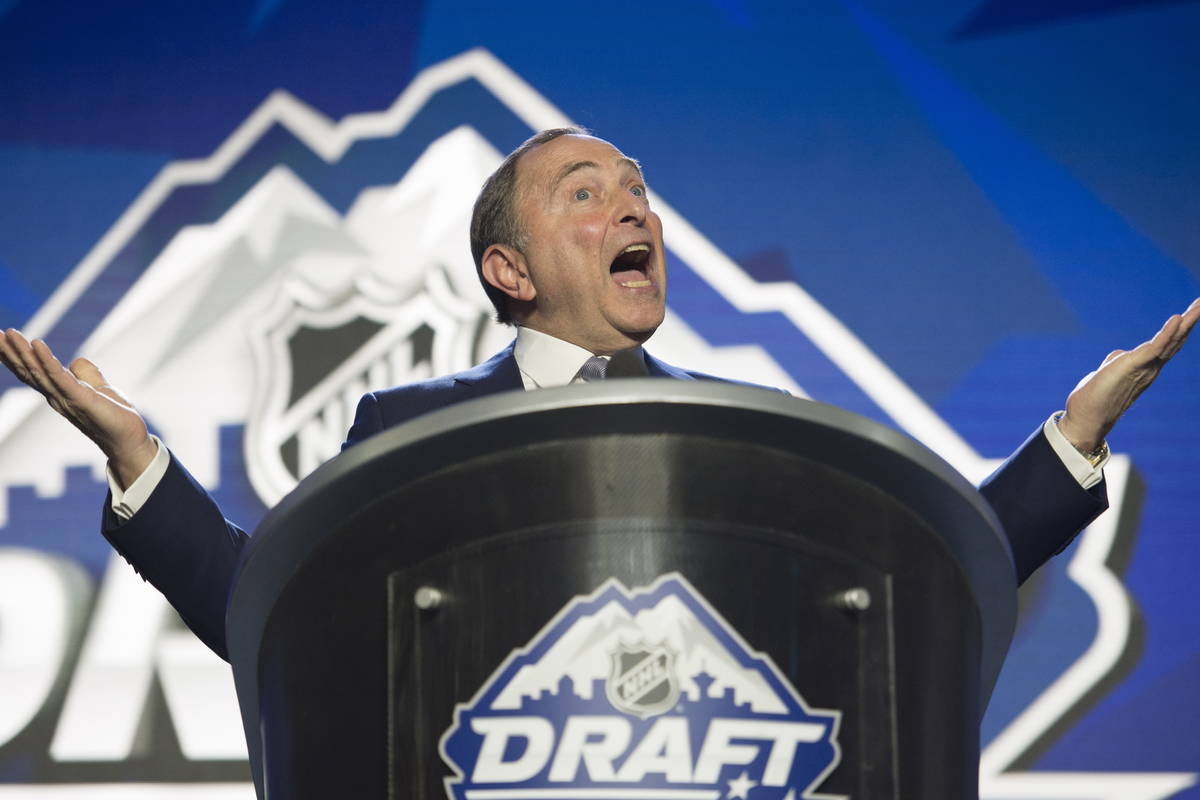Understanding rules governing the NHL entry draft

Having your name called at the draft each June is a dream come true for any hockey player.
But there’s a lot more to the seven-round event than walking on stage and posing for pictures.
Here is a guide to help understand the rules governing the NHL entry draft:
Who is eligible to be selected?
All North American players who turn 18 by Sept. 15 and are no older than 20 by Dec. 31 in that draft year are eligible. Players who go undrafted become free agents.
A player drafted from Canadian major-juniors who is not signed by his NHL team within two years is eligible to re-enter the draft as long as he is 20 or under. A player who has been drafted twice cannot re-enter.
There is no age limit for drafting non-North American players.
How is the order determined?
The league conducts a lottery involving the 15 nonplayoff teams (or the teams that have acquired the first-round pick of a nonplayoff team) for the top three selections. The odds are based on inverse order of finish in the standings, meaning the worst team has the best chance to get the first overall pick.
Commissioner Gary Bettman draws the lottery balls, with the first club pulled awarded the first overall choice. The second and third drawings set the No. 2 and No. 3 picks, respectively, while the remaining 12 teams are slotted by reverse order of finish in the regular season.
Picks 16 through 23 are awarded to the nondivision-winning teams eliminated during the first two rounds of the playoffs based on reverse order of regular-season finish. That’s followed by any division winners at picks Nos. 24 through 27.
The teams eliminated in the conference finals are given the 28th and 29th picks. The Stanley Cup runner-up has the 30th selection, followed by the Stanley Cup champion.
How long does a team have to sign a player after drafting him?
This depends on how old they were at the time they were chosen and the league in which they were playing.
An 18-year-old selected from Canadian major-junior has two years to sign or he can re-enter the draft.
For a college-drafted player, it’s more complicated. In general, the club retains his contract rights until Aug. 15 following the graduation of his college class as long as he remains in school.
If a college-drafted player leaves school early, the club holds his rights until June 1 four years after he was drafted.
For college players who were drafted at age 20, they are eligible to become a free agent after two years.
Europeans drafted from a nation with a transfer agreement with the NHL (Sweden, Finland, Czech Republic, Slovakia, France, Denmark, Norway and Germany) have a four-year window to sign.
Teams hold indefinite signing rights to players drafted from Russia, Switzerland and other countries that do not have a transfer agreement with the NHL.
What if a team doesn’t sign its first-round pick?
A team that does not sign a first-round draft pick is awarded a compensatory second-round pick of the same numeral choice in the next draft. For example, if a club cannot sign the No. 3 overall pick in the first round, it will receive the third selection in the second round as compensation.
When did the draft begin?
The first amateur draft was in 1963 in Montreal and open to players 17 years of age and older who were not already sponsored by an NHL club. By 1969, the era of direct sponsorship ended and every junior under age 20 was available to be selected.
In 1979, the name was changed from “amateur” to “entry” draft to adjust for the inclusion of professional players from the defunct World Hockey Association. The following year, a rule was instituted making players from the ages of 18 to 20 eligible to be drafted.
Where does the draft take place?
Host cities are awarded by the NHL after reviewing bids, usually a year in advance of the event.
The draft was in Montreal every year from 1963 to 1985 before it started rotating. Recent locations include Vancouver, British Columbia (2019), Dallas (2018) and Chicago (2017).
How are the top players identified?
Each team employees its own scouting staff. The NHL holds an annual scouting combine in Buffalo, New York, and also releases rankings from its scouting service.
NHL Central Scouting, which was established in 1975, teams with European Scouting Service to produce rankings for North American skaters, European skaters, North American goalies and European goalies.
Contact David Schoen at dschoen@reviewjournal.com or 702-387-5203. Follow @DavidSchoenLVRJ on Twitter.